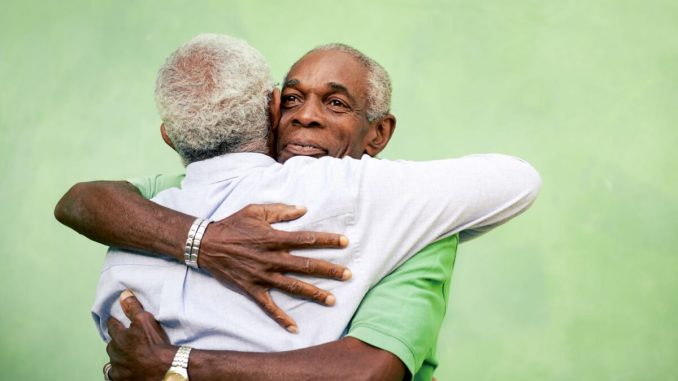

When was the last time you shook someone’s hand, or kissed them on the cheek to say hello? The pandemic has put a stop to these simple gestures, while social distancing and strict hygiene practices have become part of our everyday lives as a necessary way of minimizing the spread of the virus. But should this new way of interacting be permanent?
Some experts say that we might not, or even should not, return to the old ways once the pandemic is over. Anthony Fauci, chief medical adviser to the U.S. president, has said, “I don’t think we should ever shake, hands ever again.” He argues that it would reduce the spread of not only COVID-19 but also other viruses such as influenza.
We disagree. As soon as the pandemic is under control and it is deemed safe to do so, there are good reasons why we should start gradually embracing some of our old habits: hugging, handshaking, and gathering in groups. In cultures where such habits have been customary for centuries, doing so will have a host of social, psychological, and biological benefits.
The loss of casual touch may be detrimental to society as a whole in a way that can’t be made up for by hugging those few people closest to us or in our household. It may be that, once it is deemed safe to do so, the long-term benefits of the handshake, the hug, or the kiss on the cheek may outweigh the risks.
The Importance of Touch
From the moment of birth, physical contact increases our immunity, reduces stress, and connects us with loved ones. Skin-to-skin contact with a baby regulates heart rate, reduces pain reactions, and emotionally calms both mother and infant.
As adults, physical contact such as holding hands can provide a buffer against a stressful experience. Physical contact also increases immune function.
On a less intimate level, in many cultures, handshakes represent an important social ritual through which trust and belonging are formed and maintained. The philosopher Maurice Merleau-Ponty cited the handshake in his discussion of what he termed “inter-corporeality.” This is the often tacit or unconscious mutual recognition of our connectedness as human beings.
The Wisdom of Crowds
In our research, we have found that many people are anxious about returning to the habit of gathering in groups, even after the pandemic has subsided. This anxiety is understandable, but in the long term, we should be encouraging group gatherings.
Crowds provide opportunities for what sociologist Emile Durkheim called “collective effervescence.” Such gatherings help us form and “catch” shared emotions, which can help provide the social glue for solidarity, togetherness, and shared identity. This is a good thing, provided the mood is a positive one, for example at weddings, concerts, and sporting events.
Behaviors That Are Here to Stay
With optimism over vaccines being tempered by concern over new variants, we need to reflect on which behaviors we should keep after the pandemic, and which we should discard.
The pandemic may have made many people more aware of the role they play in protecting others, even when they themselves may not be particularly vulnerable to a disease. In many countries, health information campaigns early on in the pandemic led to dramatic improvements in self-reported personal hygiene, and many more people now understand exactly what good hand hygiene is, the rationale for it, and the benefits it brings.
We should continue to avoid touch and engage in physical distancing when suffering from a cold or the flu. Mask-wearing, long established in other cultures as a means to protect others rather than ourselves, is now being more widely understood and adhered to, with many of us assuming it will be an occasional part of our lives for years to come. This is also a good thing.
Bringing Back Rituals
The ingrained nature of social habits and rituals helps explain why social distancing has been so difficult and so unnatural for so many. Although we have, quite remarkably, suppressed these gestures and behaviors in the short term, the depth of social connection they create and symbolize may not be so easy to replace in the long term.
When it’s safe to do so, policies that prevent us physically coming together as individuals will thankfully be lifted.
After the pandemic, we need to strike a balance between the old and new normal. We can take the best parts of both—regaining our need for physical touch while retaining our new and improved hygiene habits.
is a senior lecturer in people and organization at Swansea University in the UK, and is a lecturer in clinical and health psychology at Swansea University. This article was first published on The Conversation.





Be the first to comment